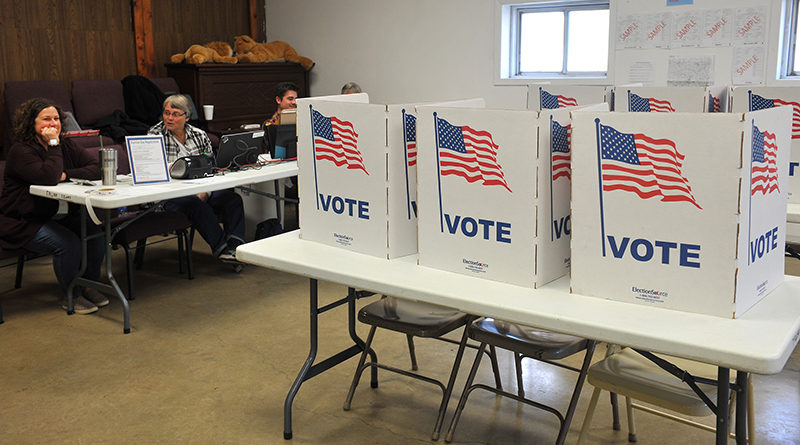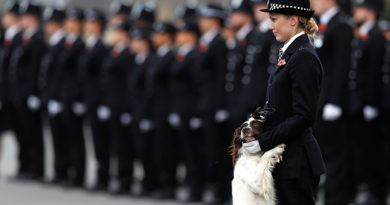How do Americans elect their president?
Das US-Wahlsystem ist kompliziert – und der Kandidat mit den meisten Wählerstimmen ist nicht immer der Sieger.
By Moya Irvine
Surprisingly, the US president is not elected directly, but by a group of 538 people known as the Electoral College. A candidate needs 270 Electoral College votes to win the presidency.
Each state has a certain number of members of the Electoral College, or electors, based on the size of its population. California, with a population of 38.8 million has 55 electors – more than any other state, while Wyoming, with 584,153 inhabitants, has only three electors. When registered voters cast their votes for the president and vice-president in the election on November 8, they will actually be choosing the electors who will represent their state in the Electoral College.
The candidate who wins the most votes in a state wins all the Electoral College votes for that state. It’s a winner-takes-all system. Even if a candidate has just 50.1 per cent of the votes, they still get 100 per cent of the electors for the state.
Some states are more or less certain to vote for a particular party. California, for example, is reliably Democratic today, with Democratic majorities in the last six presidential elections. Texas, which has 38 Electoral College votes, the second highest number, is reliably Republican with a majority voting for the GOP in every presidential election since 1980.
Swing states – they decide who wins the election
Although big states are important in terms of the number of electors, it is the so-called swing states or battleground states that decide which candidate wins an election. These states do not have reliable majorities: sometimes they are won by the Democrats and sometimes it’s the Republicans who get the Electoral College votes. Florida, Ohio, Virginia, Colorado, North Carolina and Nevada are all swing states, and it is here that the candidates spend most of their time and money on campaigning.
The 2000 presidential election – a winner without a majority
The 2000 presidential election showed how important swing states can be. In a very close election, the Republican George W Bush and Democrat Al Gore both needed Florida’s 25 Electoral College votes to win the presidency. After several recounts and a legal battle, Bush officially won Florida with just 537 votes more than Al Gore out of a total of almost 6 million votes cast in the state. Because of the Electoral College system, Bush didn’t even win the nationwide majority of the popular vote: Al Gore actually had over 500,000 more votes, but Bush had more Electoral College votes, 271 to Gore’s 266.
Where is the Electoral College? Who are the electors?
The Electoral College sounds like it should be some elegant old building, but it isn’t a place; it is really the name of the process by which the president is elected. The electors don’t have a central place where they all go to cast their votes. On the Monday following the second Wednesday of December, the electors from each state meet in their own state capitals and cast their electoral votes, one for the president and one for the vice-president. There is no federal law that says the electors have to vote for the candidate chosen by the popular vote in their state, but it is extremely rare for an elector to ignore the wishes of the voters. In fact, this has only happened nine times and has never changed the result of an election. The electors themselves are chosen by the political parties. Members of Congress and holders of federal offices are not allowed to become electors.
After the Electoral College has voted, the votes from each state are sealed and delivered to the president of the Senate, who is also the sitting vice-president. On January 6, he or she (there’s never been a she yet, but maybe one day…) opens them and reads them before both houses of Congress. Finally, on January 20, the new president and vice-president are sworn in.
Vocabulary
Electoral College Wahlmännergremium
electors Wahlmänner
inhabitant Einwohner
reliably zuverlässig
swing state / battleground state Staat mit wechselnden Mehrheiten
in terms of hinsichtlich
recount erneute Auszählung
legal battle Rechtsstreit
to cast a vote eine Stimme abgeben
popular vote Wählerstimmen
to seal versiegeln
to swear s.o. in jdn. vereidigen
You will find articles on the US election in issues of World and Press and Read On. Here are some of them:
Mormons and Donald Trump (World and Press October I 2016)
Hillary Clinton accepts nomination with “boundless confidence in America’s promise” (World and Press September I 2016)
Donald Trump proclaims himself the “law and order” candidate (World and Press August II 2016
Libertarians see chances in 2016 election (World and Press August II 2016)
Hillary Clinton: The candidate “tough enough to stop Trump” (Read On June 2016; includes mp3 and worksheet)
Who are the Trump voters? (Read On September 2016; includes mp3 and worksheet)
The race for the White House is on (Read On March 2016; includes mp3 and worksheet)
Also in Read On: US Election Question Time in every issue starting April 2016 with lots of background information
In both papers: Cartoons on elections and election issues
Precinct workers wait on voters to cast ballots in Iowa’s Madison County, November 6, 2018 in Truro, Iowa. | Photo: Getty Images





